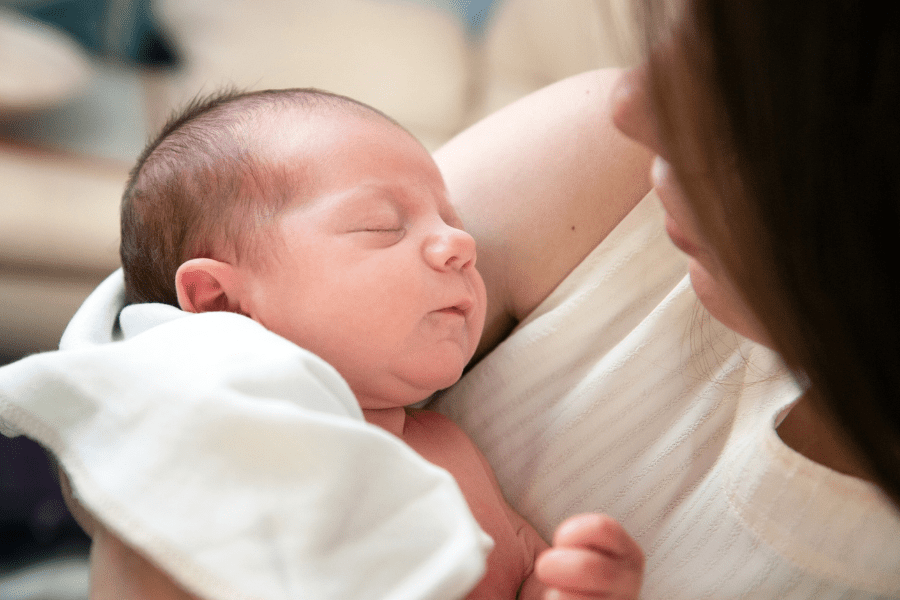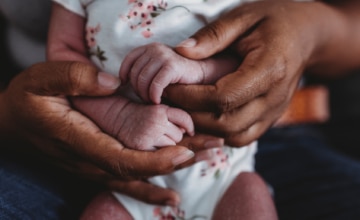The federal budget channels funding to many areas important for strong development, but it does not invest at the level required to support the equitable development of all children. More than 120 programs across almost every area of the federal budget work together to provide at least some level of the resources young children need as they undergo the foundational years of rapid brain development.
The scope of these programs extends far beyond early learning programs that usually come to mind when we think of young children, encompassing a network of supports such as shelter, nutrition, family economics, access to clean air and water, and safe communities. Our analysis organized these programs into three key areas of what young children need to thrive: Good Health, Strong Families, and Positive Early Learning Experiences.
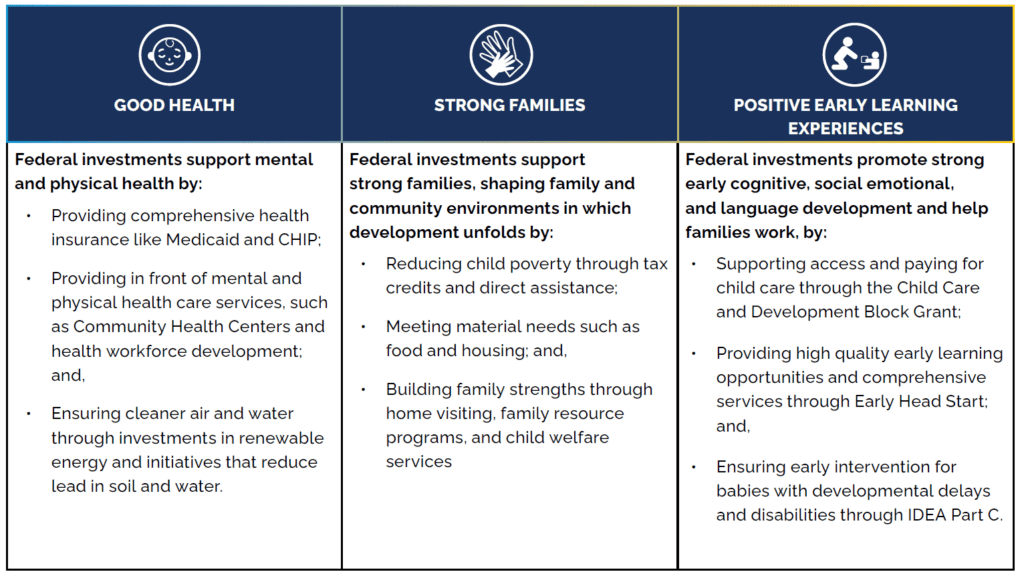
Despite this breadth of programs, federal spending does not prioritize infants and toddlers, even though their foundational development requires robust investment, a fact the science supports. The overall spending trend for infants and toddlers has been erratic since Fiscal Year (FY) 2017, in part because of increased spending during the pandemic. Comparing pre-pandemic levels with current spending as pandemic funding ends shows some needed growth, from $68 billion in FY 2017 to approximately $98 billion in FY 2023. Yet, the real value and purchasing power of spending on babies increased by only 16%, eroding particularly as the inflation rate hit its highest point in 40 years.
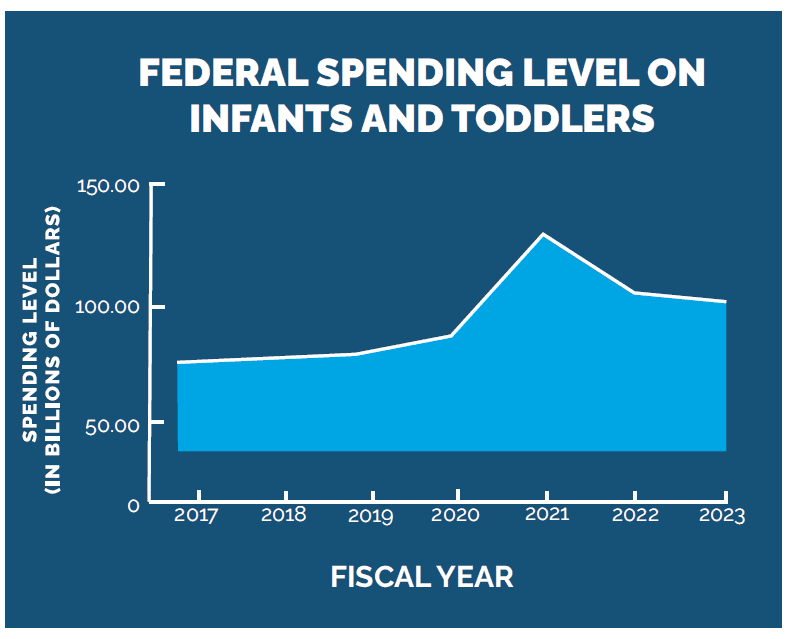
Key Findings
Key finding 1: Overall, spending on children ages zero to three makes up a very small fraction of the federal budget, not even equivalent to their share of the population. We consistently spend less than 2% of the federal budget on babies and toddlers — in FY 2020, we spent just 1.25%. Yet, babies represent 3.4% of the population and these first three years of life are critical to a child’s development.
Key finding 2: Funding for babies and toddlers has declined as a share of the federal budget since FY 2017 and has not even kept pace with inadequate investments in older children.
Key finding 3: Historically, very young children have not received their fair share of federal investments. This fact becomes more alarming when considering the real change in spending for children ages zero to three as families struggle to address the skyrocketing cost of raising young children, including paying for child care, housing, doctor’s visits, diapers, and formula.
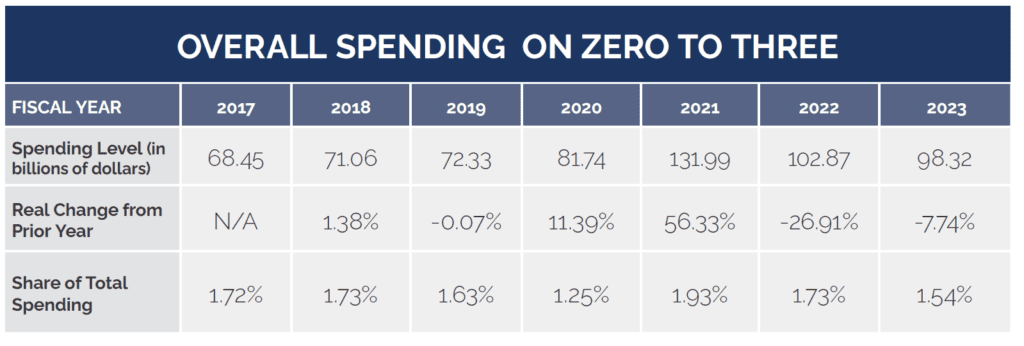
Why it matters
Infants and toddlers undergo the most rapid physical, cognitive, and emotional development of their lives, forming one million neural connections a second. By age three, the human brain has reached 80% of its adult volume as young children develop trillions of connections creating the capacity to think and reason, acquire language, form relationships and control their bodies. All later learning and relationships are built on this foundation, impacting children for a lifetime. Not all children have the resources to ensure a strong foundation. Inequities start at birth and even before.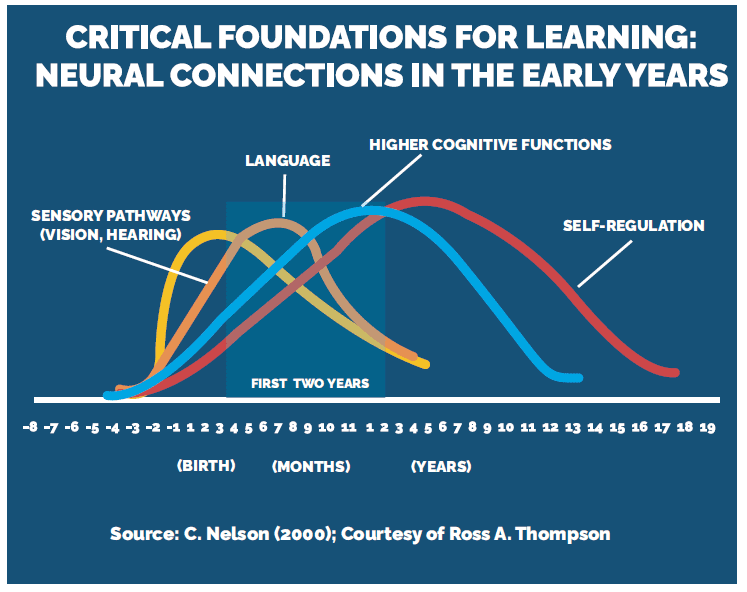
Federal investments in families with young children have the potential to address inequities and support the strong early foundation babies and toddlers need to succeed in school and as adults. If federal investments followed the science of early brain development, our nation would prioritize public investments in the first three years of life based on the understanding that young children develop and thrive in the context of strong family relationships and safe and healthy environments.

